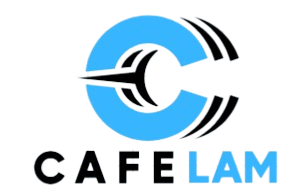The medical device industry operates within a complex framework of regulations designed to ensure products are safe and effective before reaching the market. These regulations vary by region and continue to evolve alongside technological advancements. As a result, many manufacturers find it challenging to manage compliance without expert support.
Medical devices regulatory consulting is crucial for helping companies avoid issues that can lead to costly delays, rejected submissions, or enforcement actions. Many underestimate the expertise needed to bring a product to market successfully. Even minor oversights in documentation or testing can significantly disrupt development timelines. Let’s explore the most common pitfalls in regulatory compliance—and how to avoid them.
Inadequate Regulatory Strategy Planning
A strong regulatory strategy forms the foundation of successful medical device development. Without proper planning, companies risk wasting resources and pursuing inappropriate regulatory pathways. Early-stage companies frequently make the mistake of postponing regulatory considerations until later development phases. An effective regulatory strategy begins with determining the appropriate device classification and corresponding requirements.
This includes identifying the target markets and understanding regional variations in requirements. For example, European MDR compliance differs substantially from FDA requirements in the United States. Experienced regulatory consultants recommend developing comprehensive regulatory strategies during the design phase.
Documentation and Technical File Deficiencies
Regulatory submissions often fail due to incomplete or inadequate documentation. Medical devices regulatory consulting experts frequently observe that companies struggle to compile comprehensive technical files that meet authority expectations.
Common documentation gaps include:
- Insufficient clinical evidence to support claims
- Incomplete risk management files
- Inadequate design verification and validation data
- Missing or poorly structured post-market surveillance plans
- Insufficient manufacturing process validation
Documentation should be treated as an ongoing process throughout development rather than a last-minute compilation exercise. Implementing robust document control systems and conducting regular internal audits can help identify gaps before submission.
Quality Management System Challenges
A compliant Quality Management System (QMS) serves as the operational framework for regulatory compliance. Many manufacturers, especially smaller companies, struggle to establish and maintain effective QMS processes that align with ISO 13485:2016 and other relevant standards. Organizations frequently underestimate the complexity of QMS implementation.
Simply purchasing a QMS software solution without proper integration into company operations rarely leads to sustained compliance. The QMS must be tailored to specific organizational needs while fulfilling regulatory requirements. Conducting regular internal audits and management reviews helps maintain QMS effectiveness.
Clinical Evidence and Performance Evaluation Shortcomings
Regulators increasingly demand robust clinical evidence for medical devices, yet many manufacturers struggle to develop sufficient clinical evaluation reports. The European MDR, in particular, has raised the bar for clinical evidence requirements.
Common mistakes include:
- Relying solely on predicate device equivalence without supporting data
- Failing to address specific indications for use in clinical evaluations
- Overlooking the need for ongoing clinical follow-up studies
- Using outdated literature or ignoring contradictory findings
Developing a comprehensive clinical evaluation plan early in development helps ensure appropriate evidence collection. This plan should align with the specific regulatory requirements of target markets and address both the device’s safety and performance aspects.
Post-Market Surveillance and Vigilance Issues
Compliance obligations don’t end when a product reaches the market. Many manufacturers pay insufficient attention to post-market surveillance (PMS) and vigilance reporting requirements. This can lead to significant regulatory issues.
Effective PMS programs systematically collect and analyze real-world data about device performance. This information feeds into risk management processes and may trigger design improvements or labeling updates. Failure to establish comprehensive PMS systems can delay identifying emerging safety issues.
Medical devices regulatory consulting services can provide valuable guidance through these complexities, helping organizations avoid costly pitfalls and accelerate time to market. The key to success lies in viewing regulatory compliance as an integral part of product development rather than a hurdle to overcome. This mindset shift helps integrate compliance activities throughout the product lifecycle.







